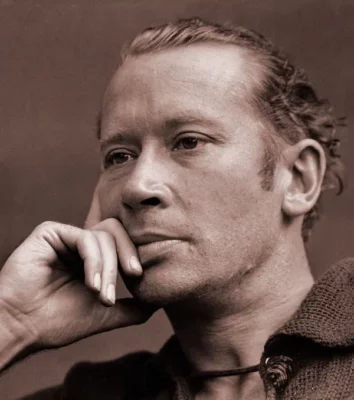Poets
The Background and Legacy of E.E. Cummings
 E.E. Cummings, born Edward Estlin Cummings on October 14, 1894, in Cambridge, Massachusetts, was a highly influential and innovative American poet, playwright, essayist, and painter. Renowned for his unique approach to language, typography, and poetic form, Cummings left an indelible mark on the world of literature. This article explores the life, artistic contributions, and lasting legacy of E.E. Cummings.
E.E. Cummings, born Edward Estlin Cummings on October 14, 1894, in Cambridge, Massachusetts, was a highly influential and innovative American poet, playwright, essayist, and painter. Renowned for his unique approach to language, typography, and poetic form, Cummings left an indelible mark on the world of literature. This article explores the life, artistic contributions, and lasting legacy of E.E. Cummings.
Early Life and Education
E.E. Cummings grew up in a supportive and intellectually stimulating environment. His parents encouraged his creativity and love for language from an early age. Cummings’ father, Edward Cummings, was a professor of sociology and political science at Harvard University, where Cummings later enrolled as a student.
Shaping the Artistic Voice
During his time at Harvard, Cummings delved into various art forms, including poetry, playwriting, and visual arts. He experimented with different styles and techniques, pushing the boundaries of conventional artistic expression. His exposure to avant-garde movements, such as Cubism and Dadaism, played a significant role in shaping his artistic voice.
Innovative Writing Style
One of the most distinctive aspects of E.E. Cummings’ work is his unconventional use of language and typography. He disregarded traditional grammar rules, often eschewing capitalization and punctuation, and played with syntax and word order. Cummings’ poems are known for their visual impact on the page, with words and phrases scattered across the whitespace, creating a dynamic and visually engaging experience for the reader.
Themes and Influences
Cummings’ poetry explores a wide range of themes, including love, nature, identity, and the human condition. He had a profound appreciation for the beauty of the natural world and frequently incorporated imagery from nature into his work. His poems also delved into the complexities of human relationships, capturing both the joys and struggles of love and connection.
Influenced by transcendentalist thinkers like Ralph Waldo Emerson and Henry David Thoreau, Cummings celebrated the individual’s freedom of expression and connection to the larger universe. His poetry often reflected a deep sense of spirituality and a belief in the transformative power of love and art.
Literary Contributions and Recognition
E.E. Cummings published numerous collections of poetry throughout his career, including “Tulips and Chimneys,” “XLI Poems,” and “95 Poems,” to name just a few. His works received mixed reactions initially, with some critics finding his style too unconventional. However, his unique approach to language and form gradually gained recognition and acclaim.
Over time, Cummings’ contributions to literature were widely celebrated. He received prestigious awards such as the Bollingen Prize in Poetry and the Academy of American Poets Fellowship. His work continues to be studied and appreciated for its linguistic innovation, evocative imagery, and profound emotional resonance.
Legacy and Influence
E.E. Cummings’ legacy as a poet and artist extends far beyond his lifetime. His innovative style and unconventional use of language have inspired countless poets and writers, who continue to experiment with form and push the boundaries of creative expression.
Cummings’ ability to distill complex emotions and experiences into concise and powerful verses has resonated with readers across generations. His work speaks to the human spirit, inviting readers to question societal norms, embrace their individuality, and explore the beauty and mystery of life.
Conclusion
E.E. Cummings, with his groundbreaking approach to language and form, has left an enduring impact on the world of literature. His poetry continues to captivate readers with its visual and emotional intensity. Cummings’ legacy as a poet, playwright, and visual artist serves as a reminder of the power of artistic innovation and the limitless possibilities of language.
FAQs
- What was E.E. Cummings’ writing style like? E.E. Cummings’ writing style was highly unconventional. He played with syntax, word order, and typography, often disregarding traditional grammar rules and using lowercase letters and minimal punctuation. His poems were visually striking on the page, with words scattered across the whitespace.
- What were the major themes in E.E. Cummings’ poetry? E.E. Cummings’ poetry explored various themes, including love, nature, individuality, and spirituality. He celebrated the beauty of the natural world, delved into the complexities of human relationships, and expressed a deep belief in the transformative power of love and art.
- Was E.E. Cummings’ work initially well-received? Initially, E.E. Cummings’ work received mixed reactions from critics. Some found his unconventional style challenging and resisted his departure from traditional poetic norms. However, over time, his innovative approach gained recognition and acclaim.
- What is E.E. Cummings’ lasting legacy? E.E. Cummings’ legacy lies in his profound influence on poetry and artistic expression. His groundbreaking use of language and form continues to inspire poets and writers to push the boundaries of creative expression and embrace unconventional approaches.
- Are there any awards or honors that E.E. Cummings received? Yes, E.E. Cummings received several notable awards and honors, including the Bollingen Prize in Poetry and the Academy of American Poets Fellowship, in recognition of his significant contributions to literature.
Shop for E.E. Cummings Typography Art Prints
Shop the E.E. Cummings Collection.

